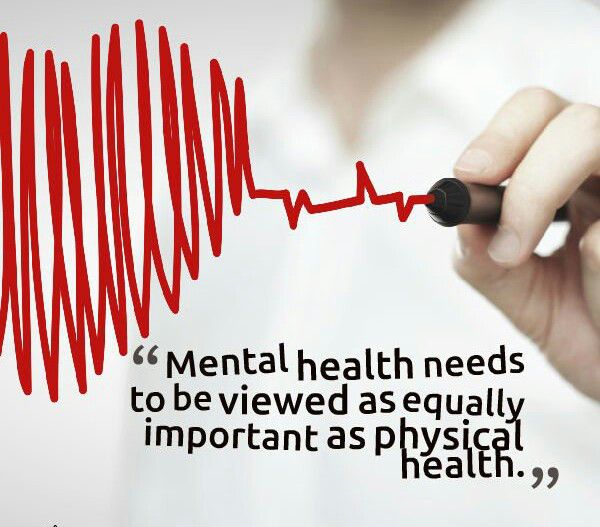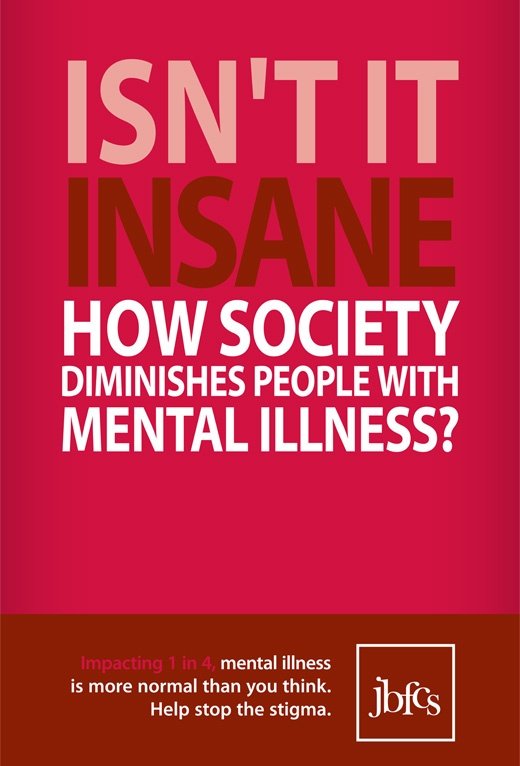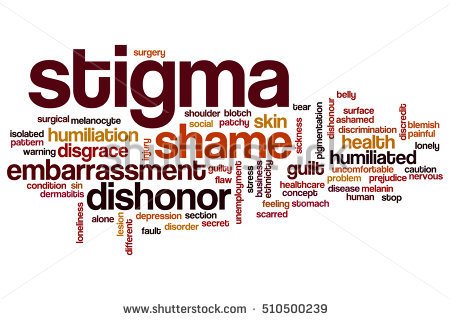What is a MENTAL STIGMA and how to reduce and end mental stigma?
Stigma is a word of Greek origin, which represents a sign imprinted on the skin of slaves, traitors or criminals to indicate their inferior status. People with mental disorders face different problems. They have to deal with the symptoms of the illness they have, and the symptoms depend on the disorder itself - they can be hallucinations, illusions, changes of mood ... These symptoms can significantly reduce the quality of life of these people. Firstly, they can affect on their family, business and social life. Secondly, they have to face the stigma that exists in society when it comes to mental disorders. Stigma is mainly due to lack of understanding and lack of knowledge about something. It leads to the point where these people are excluded from the society - friends leave them, they are hard to find a job - which additionally adds to their symptoms. So one circularity can be seen here. This stigma also affects the families of those who are also most often excluded from the society, and as the family plays a major role in helping the patient, his productivity is reduced and that goes at the expense of the diseased.
Stigma refers to the negative marking of a person simply because it suffers from a mental illness major misconceptions about people with mental disorders were discovered: they are psychopaths prone to murder and should be frightened, they are rebellious, free spirited, and they are persons with a childlike perspective of the world . Research shows that society more excludes people with mental disorders than those with somatic illnesses because people believe that people with mental disorders are themselves responsible for causing their illness . This does not apply to schizophrenia as much as for addiction and depression.

An example of stigma:
Ana was 25 years old and was hospitalized for acute schizophrenia. After therapy, she had been released and symptoms did not show up in the next two years. Ana worked in a tourist agency and had a good social life. However, at one point, the relapse happened and she was again hospitalized. After two months she was released from the hospital and was ready to return to work. However, her employer dismissed her on the grounds that she could be dangerous to clients. She lost all her friends, and her parents forced her to go to live with them in another city. Everything has changed, and her illness has worsened again.
From this example, the importance of studying and combating the stigmatization of mental disorders can be seen. Stigma causes various consequencEs for individuals as well as for society as a whole . Firstly, the stigma leads to various discrimination against people with mental disorders (in school, at work etc.). Secondly, it is considered that the stigma has led to ministries to invest more in the medical system than in psychiatric ones. The budgets for treating somatic ilnesses are higher than the mental ones. It is thought that it is easier to treat such persons and their problems at the institutions and in some ways "to control them". Thirdly, the stigma leads to the fact that people with mental disorders do not seek help because of the fear that they will immediately be marked as "crazy."

Previous research
Various concepts and definitions that are relevant to stigma measurement are cited: Gofman states that a stigma is an attribute that deeply discredits an individual, and that it is a connection between adjectives and prejudices; Jones lists the six dimensions of the stigma: the concealment (how much the characteristic is obvious and visible to others, for example - some people manage to conceal their difficulties or illness), the course (whether the stigmatization state is reversible, or whether it is possible that negative attitudes "disappear" ), disturbance (in what degree the social interactions of a person are "disturbed", for example – at some people’s disorders the interactions are quite disturbed because people are afraid whether these will suddenly react or act aggressively), aesthetics (in terms of stigma this refers to the degree in which an instinctive reaction to abhorrence occurs), the origin (who is "guilty" of the current situation, for example, if a person estimates that a person who has a mental illness is to some extent responsible for his condition, it is more likely for him to be condemned more), the danger (how much we estimate that a person is potentially dangerous, for example - that he will attack us, etc...). Link and Felan state that stigma exists when the following components exist. They are interconnected and converged. In the first component, people make and emphasize differences; in the second, marked people are beeing conected with negative stereotypes and undesirable characteristics, in the third, the marked persons are placed in categories in order to make the difference between "us" and "them", in the fourth it comes to that that marked persons experience a loss of status and go through discrimination that leads to unequal outcomes. Refering to the written, the term stigma is applied when there is personality labeling, stereotyping, discrimination, and the loss of status that develops through situations.

Of those who suffer from some kind of mental disorder, it is estimated that around 70% do not seek help. These percents are alarming, given the high prevalence of mental health problems among the general population. Several factors have been identified that contribute to the difference between true and treated prevalence: (1) the lack of knowledge of the symptoms of mental illness and the approach to treatment, (2) prejudice, and (3) the expected or actual acts of discrimination against people with mental health problems. These factors are defined together.

Strategies to combat stigma
To combat the stigma, three main strategies were usually used (and are still used): protest, education and contact:
- Protest - Usually used against the stigmatization of public statements, media reports and advertisements. Many of these protests have successfully changed these public statements.

- Education - tries to reduce stigma by giving contradictory information. The use of various forms, such as books, video clips, and structured curricula are used to convey such information. Short educational courses on mental illness have proved useful for reducing stigmatizing attitudes among various participants - police officers, industrial workers, officials, government, high school students. However, research shows that such courses have more impact on people who have better knowledge of mental illness before the course itself or who have had previous contact with mental illness. Therefore, these courses tend to reach those who already agree with the message, for example - mental health experts.
- Contact - people contacting with people with mental disorders can have a strong effect in reducing stigma. However, this depends primarily on the terms of communicating. This intervention will be successful if it includes: equal status among participants, cooperative interaction and institutional support for contact. For example, contacting high school students with mental disorders will be more effective if the director has given consent for this, if students are not just passive observers but can ask questions.
- Open Door - In January 2002, the German organization for the suppression of stigma against mental illness created a "open door" program in Düsseldorf, where a movie was screened in teathre, in order to combat discrimination against mental illnesses. The film is about a boy called Lucas, suffering from schizophrenia. The film shows his life and his problems in everyday life. There were 200 people on the event, and they were invited through the newspaper, the Internet, billboards. The entrance was free, and after the movie, there was a discusion in which the mentally ill people, psychiatrists and psychologists took part of. The audience was able to ask a variety of questions. They were given a questionnaire before and after the film itself. The film and the discussion significantly reduced the stigma.
Thank you for reading, I hope you liked it!
References:
- Brockington, I. F., Hall, P., Levings, J., & Murphy, C. (1993). The community’s tolerance of the mentally ill. British Journal of Psychiatry, 162, 93–99.
- Cohen, J., & Struening, E. L. (1962). Opinions about mental illness in the personnel of two large mental hospitals. The Journal of Abnormal and Social Psychology, 64(5), 349.
- Gaebel, W., Baumann, A., & Phil, M.A.(2003). Interventions to reduce the stigma associated with severe mental illness: Experiences from the Open Doors program in Germany, Can J Psychiatry, 48, 657-662;
- Goffman, E. (1997). Selections from stigma. The disability studies reader, 203, 215.
- Hanisch, S. E., Twomey, D., Szeto, A. C. H., Birner, U. W., Nowak, D., & Sabariego, C. (2016). The effectiveness of interventions targeting the stigma of mental illness at the workplace: a systematic review, BMC Psychiatry 16(1), 1-11.
This was very well written . I have a brother with mental illness , one thing my family seems to forget is that he didnt bring the condition upon himself . It makes me sad anytime I think about it . Okay im gonna go cry now V_V
Thank you. We all need to spread awareness of mental stigma and help these people. Hang on, everything will be fine :)
Congratulations @top5attractions! You have completed some achievement on Steemit and have been rewarded with new badge(s) :
Click on any badge to view your own Board of Honor on SteemitBoard.
For more information about SteemitBoard, click here
If you no longer want to receive notifications, reply to this comment with the word
STOP